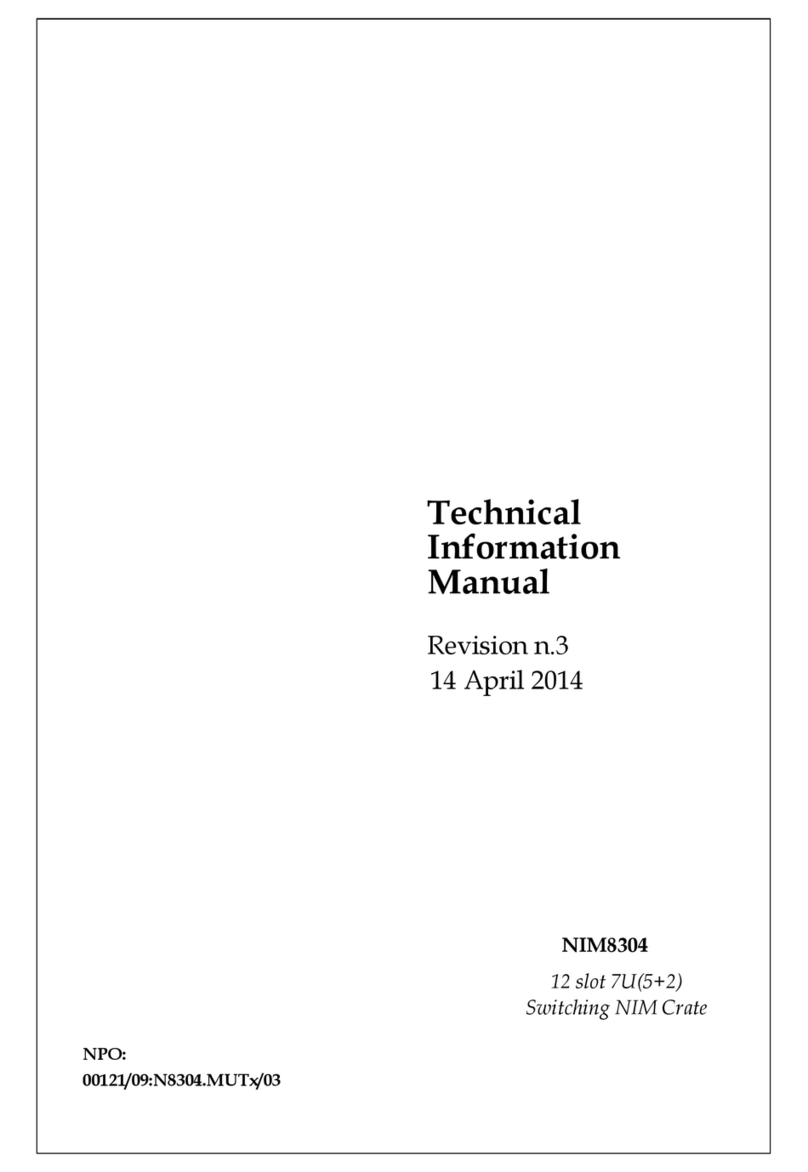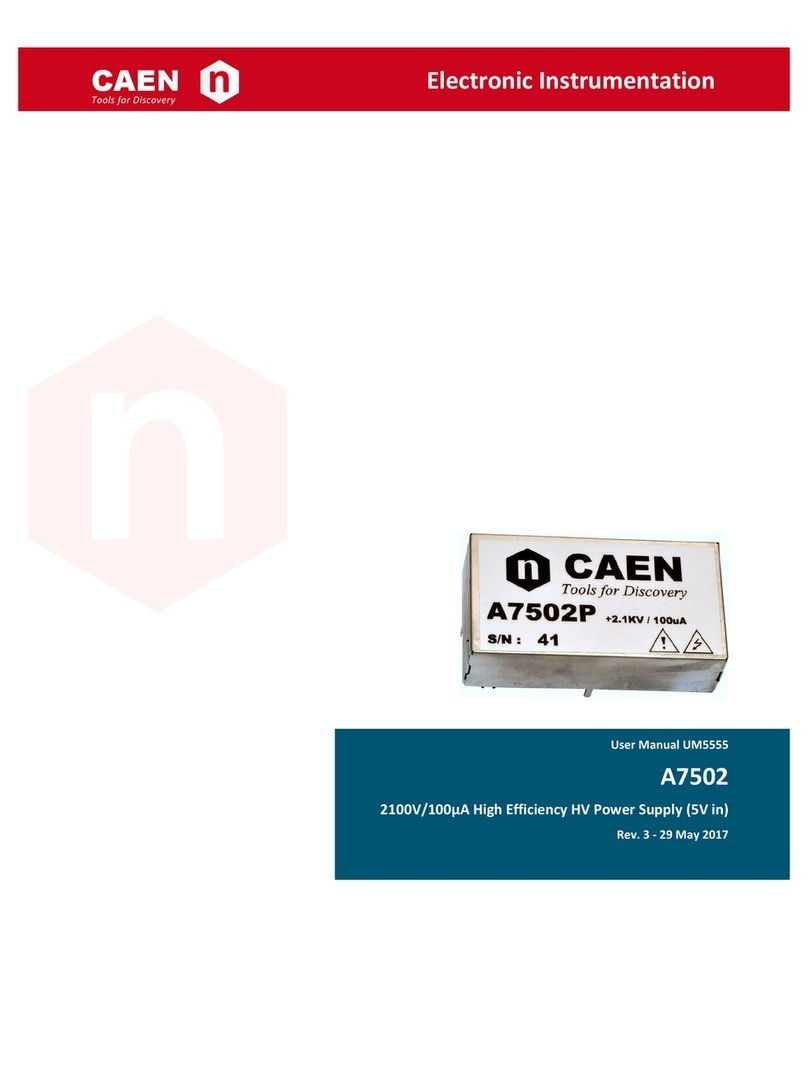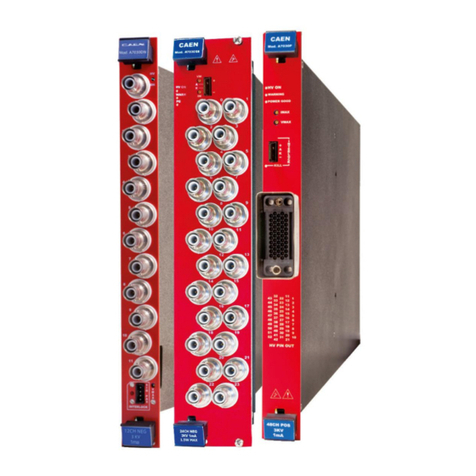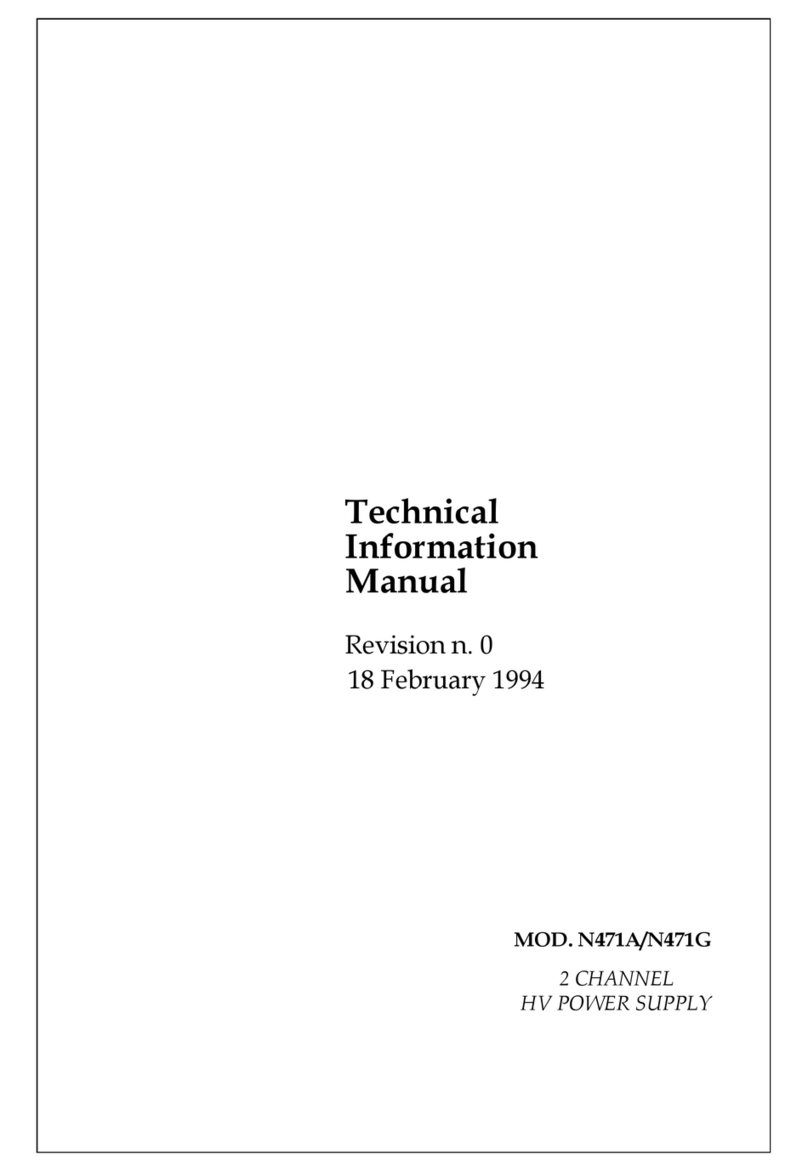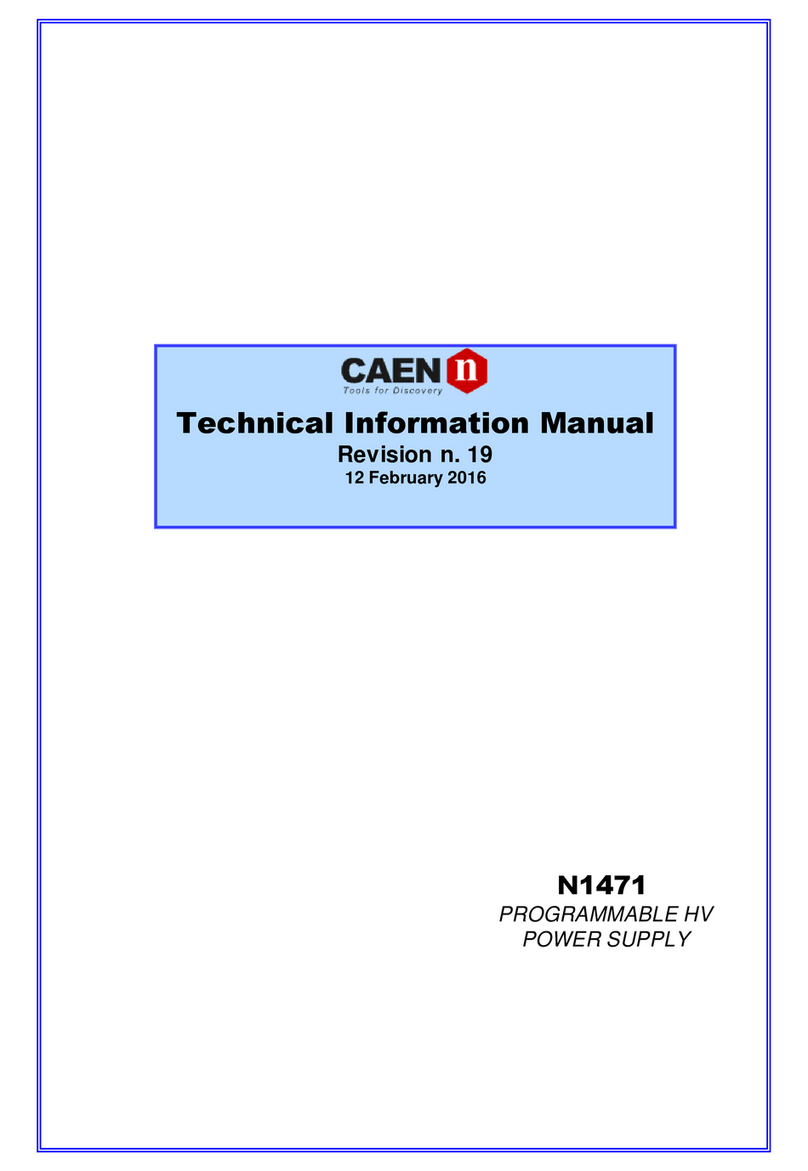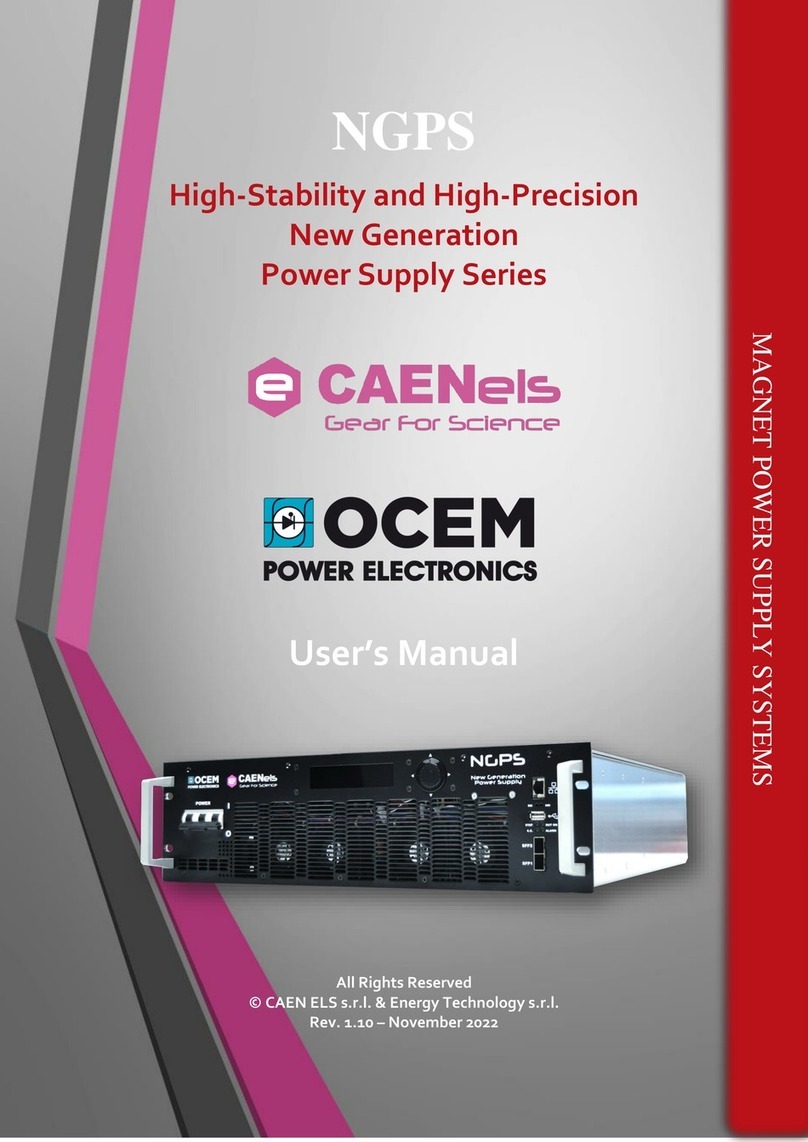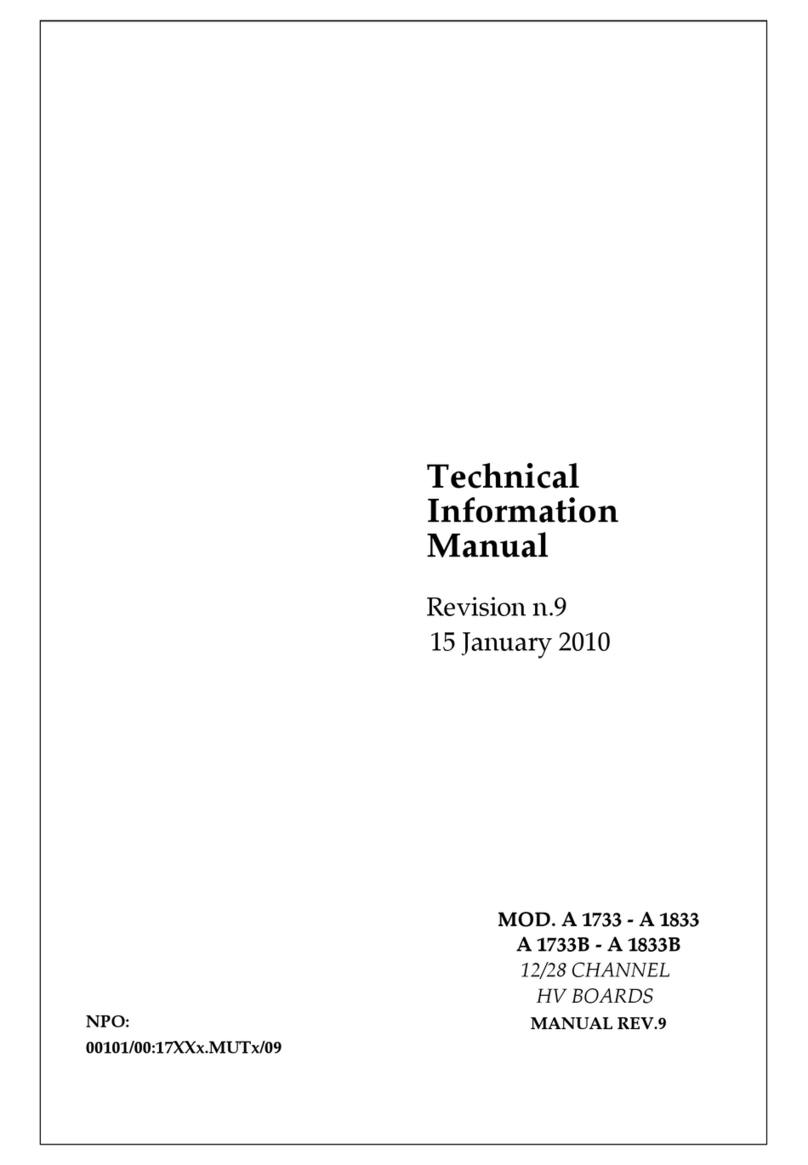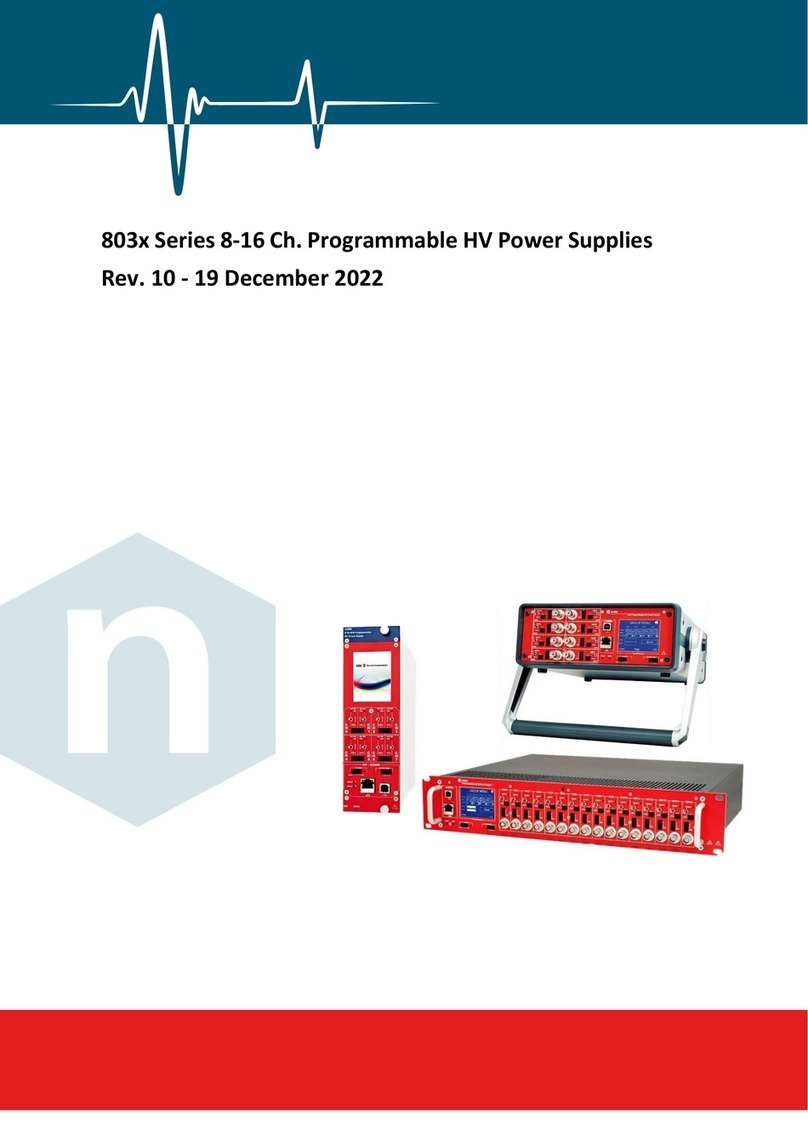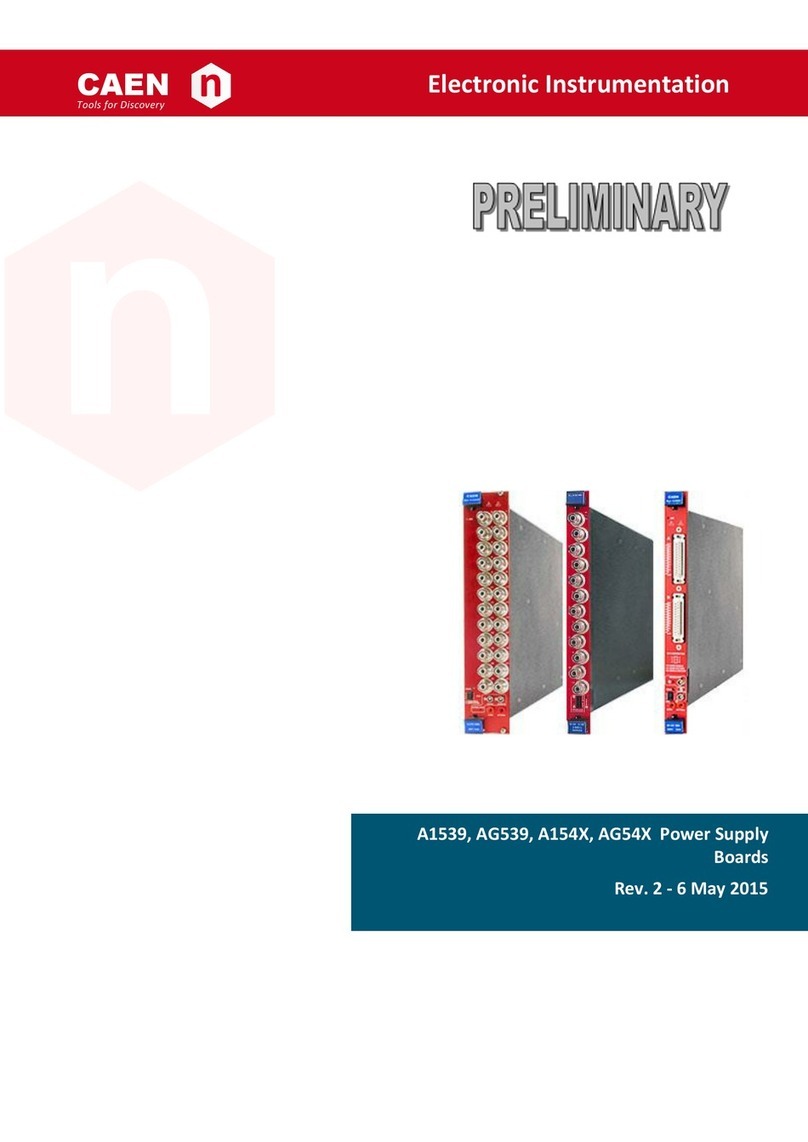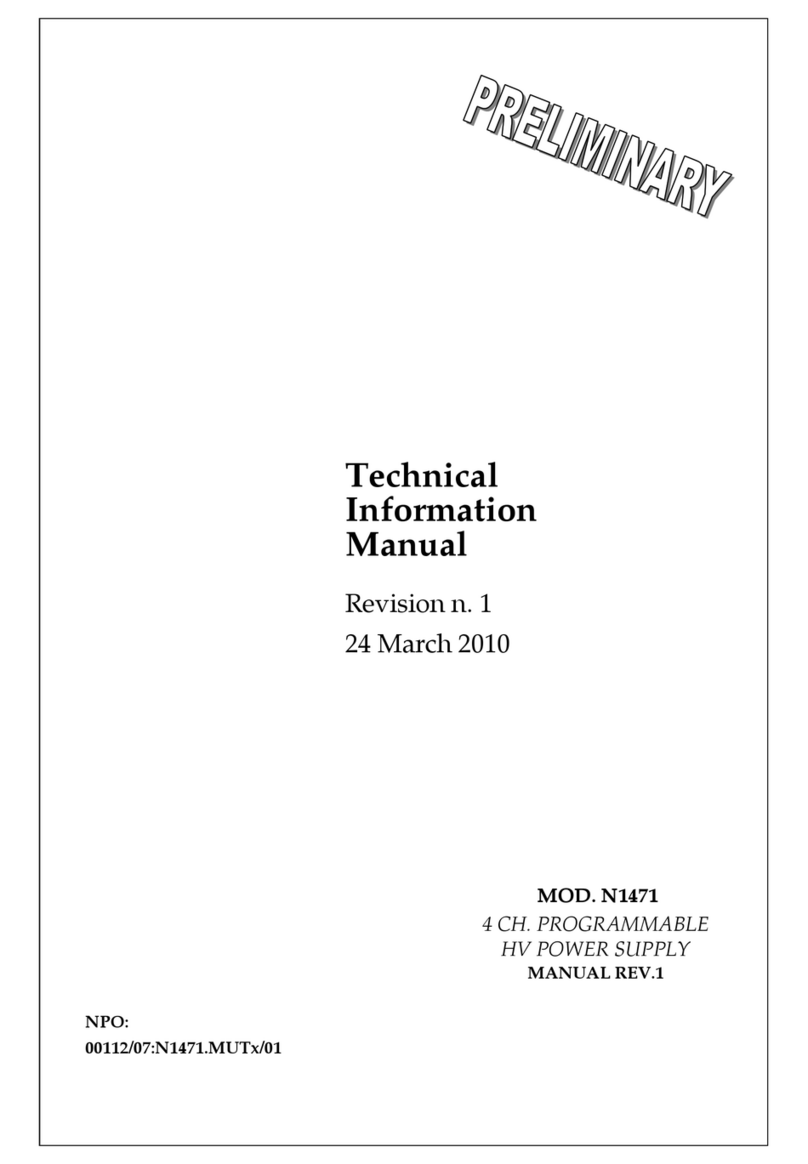Document type: Title: Revision date: Revision:
User's Manual (MUT) Mod. SY2527, Universal Multichannel Power Supply System 27/11/2000 0
NPO: Filename: Number of pages: Page:
00103/97:2527y.MUTx/00 SY2527USERMANUAL_REV0.DOC 84 3
4.3.9 Over Temperature...................................................................................................................27
4.3.10 Fan Failure............................................................................................................................. 27
4.3.11 Pwr Failure.............................................................................................................................27
4.4 CHANNEL PARAMETERS ...................................................................................................................28
4.4.1 CHANNEL NUMBER (CH #).................................................................................................. 28
4.4.2 CHANNEL NAME (CHANNEL) .............................................................................................29
4.4.3 VMAX HARDWARE (HVMAX)..............................................................................................29
4.4.4 VMAX SOFTWARE (SVMAX)................................................................................................29
4.4.5 V0SET..................................................................................................................................... 29
4.4.6 I0SET...................................................................................................................................... 29
4.4.7 V1SET..................................................................................................................................... 30
4.4.8 I1SET...................................................................................................................................... 30
4.4.9 RAMP-UP (RUp) ....................................................................................................................30
4.4.10 RAMP-DOWN (RDwn)............................................................................................................30
4.4.11 VMON.....................................................................................................................................30
4.4.12 IMON......................................................................................................................................31
4.4.13 TRIP .......................................................................................................................................31
4.4.14 POWER (PW) .........................................................................................................................31
4.4.15 POWER-ON (POn).................................................................................................................. 32
4.4.16 POWER-DOWN (PDwn).........................................................................................................32
4.5 CHANNEL STATUS ............................................................................................................................ 32
4.6 BOARD STATUS................................................................................................................................33
5. SYSTEM POWER-ON ........................................................................................................................34
5.1 PRELIMINARY CHECK .......................................................................................................................34
5.2 LOCAL POWER-ON...........................................................................................................................34
5.3 REMOTE POWER-ON........................................................................................................................35
6. CONFIGURING THE INTERFACES................................................................................................36
6.1 RS232 INTERFACE ...........................................................................................................................36
6.2 ETHERNET INTERFACE (TCP/IP PROTOCOL)......................................................................................37
6.2.1 Configuring the SY 2527 System for network connection.........................................................37
6.2.2 Configuring the host PC..........................................................................................................37
6.2.3 Verifying connection ...............................................................................................................38
6.3 H.S. CAENET INTERFACE...............................................................................................................39
7. OPERATING MODES.........................................................................................................................40
7.1 STANDALONE OPERATION.................................................................................................................40
7.1.1 Local Control Devices.............................................................................................................41
7.1.2 Software Version.....................................................................................................................42
7.1.3 Menu Structure .......................................................................................................................43
7.1.4 Welcome Window....................................................................................................................44
7.1.5 Login Window......................................................................................................................... 44
7.1.6 Start Up Window.....................................................................................................................45
7.1.7 The - Menu: About .................................................................................................................. 47
7.1.8 The - Menu: Session................................................................................................................48
7.1.9 The MAIN Menu: Channels..................................................................................................... 49
7.1.10 The MAIN Menu: Crate Map................................................................................................... 54
7.1.11 The MAIN Menu: Connect.......................................................................................................55

